When it comes to aquariums, filters are essential.
And, one of the most common types of filters is mechanical filtration.
But what is mechanical filtration and why is it important in your aquarium?
Well, today I am going to explain all that and more!
Contents
What is mechanical filtration?
Mechanical filtration is one of three different types of filters that can be used in your aquarium. The other two are biological and chemical filtration.
Have you ever used a fish net? Water can freely pass through the net, but fish or other solid objects are trapped inside.
Well, mechanical filtration works in a similar manner.
The mechanical filter media sits inside your filter unit and physically traps and strains any solid waste that passes through your filter system. With the waste removed, clean water flows back to your aquarium.

Mechanical filters are used to remove unsightly waste such as fish poop, sludge, uneaten food, dead pieces of plants, dust and other particles that are floating in your aquarium.
If all this gunk builds up, the water in your aquarium would turn cloudy, and you wouldn’t be able to see your fish!
In a freshwater aquarium, mechanical filtration is considered essential.
Like all types of filtration, mechanical filters need maintenance.
Over time, if left unattended, all the trapped waste will begin to rot, which can lead to a nitrate spike.
Fortunately, this is easily avoided with proper maintenance – regularly cleaning or replacing mechanical filters prevents this waste from building up to problem levels.
What are the different types of mechanical filtration?
Mechanical filter media are graded according to the size of the pores (holes) that allow water to pass through.
The coarser the filter media, the larger the pores.
The finer the filter media, the smaller the pores.
Waste that is pushed through a coarse filter will be trapped in a fine filter.

Now, you may be wondering:
If a fine filter media traps everything, then why would you bother with a coarser filter?
That’s a very good question!
The answer is actually pretty simple…
Coarse filter media not only take longer to clog but are also easier to clean.
This is in contrast to fine filter media, which clog quickly when exposed to large pieces of waste. And given that many fine filters need to be discarded after use, this can be a good way to burn through money.
It is also worth mentioning that if the filter clogs, it can prevent oxygen from reaching the beneficial bacteria in your aquarium, killing them and causing your tank to crash.
It is for this reason that you will often see coarse filter media used as a pre-filter, installed before a finer filter. This way, it traps the larger pieces of waste before they reach the fine filter media.
This one-two punch prevents large pieces of waste from clogging your fine filter, while it works on trapping the particles of waste that were too small to be caught by the coarse filter.
But you don’t have to stop at two. Many fish keepers layer multiple types of mechanical filters along with biological filters to create a truly customized filtration system for their aquarium.
There are five different grades of mechanical filter media…
Very coarse filter media

Also known as extra coarse, this mechanical filter media should only be used as a pre-filter to prevent finer filter media from clogging with large pieces of waste.
Coarse filter media
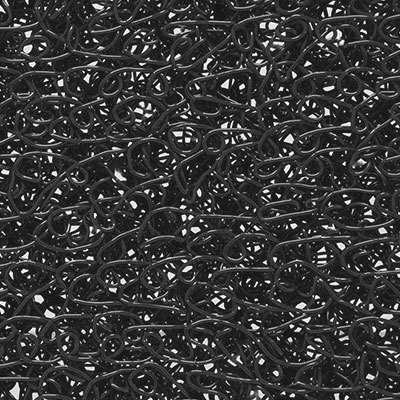
While it can filter out slightly smaller pieces of waste than the very coarse filter, coarse media is still best used as a pre-filter.
Medium filter media

We have gotten to the point where the filter will make a visible difference to your aquarium. With a medium filter media installed, your water will look noticeably clearer, with fewer solid waste particles floating around your aquarium.
If you really want to, you could get away with just using a medium mechanical filter in your aquarium – but don’t expect crystal clear water.
Sponge filters are typically considered medium mechanical filtration.
Fine filter media

Want clear water? Then fine is what you need. These filters are capable of trapping those really small pieces of waste that float around your aquarium.
As discussed before, you will see the best results if you use a coarser filter media before a fine filter media.
Extra fine filter media

If crystal clear water is what you are after, then extra fine filters are the best way to achieve it.
The finest mechanical media can trap particles as tiny as one micron. That’s really small. To put that in perspective, one micron is almost 90 times smaller than the width of a hair.
The finest filter media can not only trap tiny pieces of waste, but also parasites and bacteria that you cannot see with the naked eye.
Note: The above pictures are for illustrative purposes only. Both the filter material and definition of coarse and fine vary from brand to brand. One brand’s extra coarse may be another brand’s medium.
What are the best mechanical filters?
Pssst… I’m going to let you in on a little secret…
There is no single best mechanical filter media.
And that’s not because I am being lazy, not wanting to declare an outright winner.
It’s because there are so many different factors than can affect the performance of a mechanical filter, including:
- The type of filter you use
- The size of your tank
- The rate that water passes through the filter media
- The surface area of the mechanical filter
- How well you maintain your aquarium
- How often you change or clean your filter media
- If you installed the filter media correctly
- Any other filters you are using
So for me to declare a single winner isn’t exactly beneficial, since you might not achieve the same success.
My advice is this…
Don’t overthink it!
When used correctly, mechanical filter media can successfully trap and remove waste and other debris from the water column.
With that said, I am going to show you some of the products that make good mechanical filters…
Filter pad
Filter pads are by far the most common type of mechanical filter media available. Coming in a wide range of materials and coarseness, filter pads provide the most opportunities for customization.
Filter pads come in rolls that you cut to size. But many brands sell their pads that slide in without any extra effort on your part, although these are often more expensive.
Filter floss
Resembling cotton candy, this mechanical media is made of tightly bunched polyester fibers that are capable of trapping small waste particles and debris.
Sponge
Sponges are typically considered to be better for biological filtration. But if used and maintained correctly, they can also make a great mechanical filter.
Sponges are graded in pores per inch (PPI). If you want a coarse sponge to remove larger pieces of waste, 10 PPI will do the job. A sponge that is 30 PPI can remove fine particles.
It’s best to stick to this range. Anything higher than 30 PPI will clog too easily.
Cartridge media
Cartridges are elaborate filters designed to fit only one type of filter, locking you into buying replacement filters from that manufacturer for life.
While they often work well enough, they are often more expensive than buying the equivalent media and installing it yourself. Cartridges also make it difficult to customize your filtration system.
Do saltwater aquariums need mechanical filters?
While mechanical filtration is basically essential for a freshwater tank, saltwater tank owners often go without.
This is because marine fish and corals are incredibly sensitive to nitrates.
Here comes the bad news: Your mechanical filter is going to accumulate bacteria that produce nitrates. It’s a natural part of the nitrogen cycle and without constant maintenance, your filter can do more harm than good.
Mechanical filters, when constantly run, can also filter out the floating food pieces that corals eat.
But don’t count mechanical filters out just yet. They can still play an important role in maintaining good water quality – just on more of a part-time basis.
You see, unless you have particularly sensitive fish, it’s unlikely that you will be running a mechanical filter 24/7 in your reef tank.
But if you kicked up a lot of gunk from a careless water change or from moving rock around your aquarium, mechanical filtration is exactly what you need.
Turn your filter on temporarily to remove any suspended waste from your aquarium. Once the water is clear, turn it off.
When used temporarily, mechanical filtration can be very useful in saltwater tanks. Removing the floating food bits from a messy feeding session or even polishing your water to crystal clear perfection – mechanical filtration can work wonders.
Just don’t forget to remove or clean the filter when you are finished to prevent those nitrate problems I mentioned earlier.
What do you use as mechanical filtration in your aquarium? Let me know in the comments below!

Ian Sterling, founder of Fishlab.com, began his aquarium journey over 30 years ago, driven by a deep fascination for fish and their diverse personalities. His website, Fishlab.com, is dedicated to making fishkeeping accessible and enjoyable, offering beginner-friendly guidance, expert insights, and a community for aquarists to connect and share experiences.



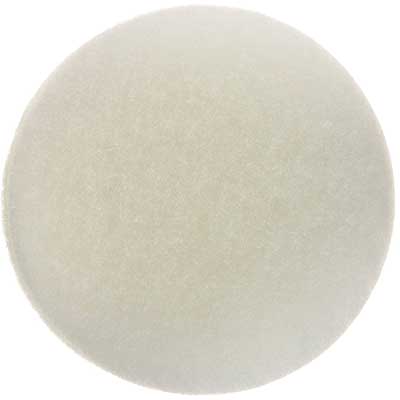
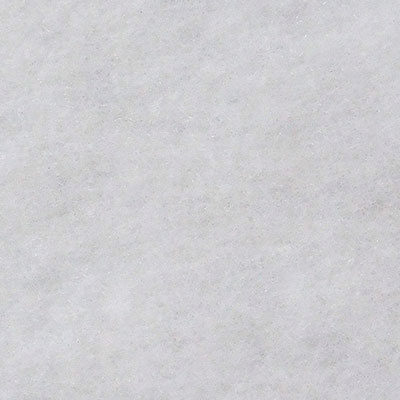
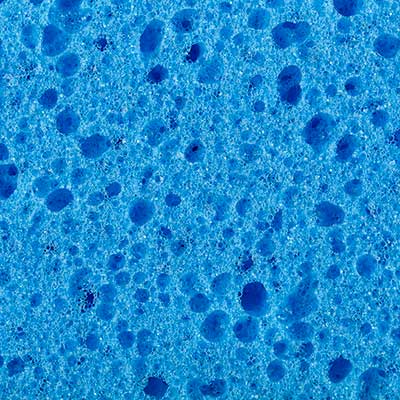
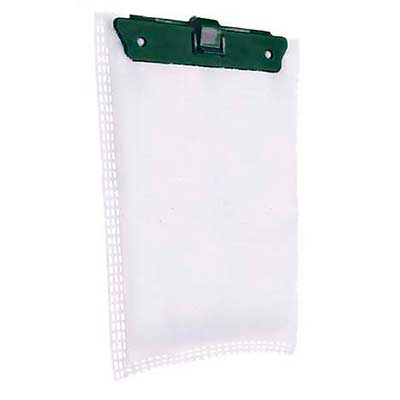
Comments (12)
Ian, this was a great overview. Thanks for sharing your knowledge. As a beginner, I’m trying to plan the best set up possible for a small tank (30x30x30cm). I’m wondering whether a combination of both the undergravel filter and the modern one would be of any help? I’m intrigued by the best use of ceramic media, that perhaps can go underground and also in the filter hanged on the tank?
Thanks Guiseppe,
While you can never have too much filtration, if you are properly stocking your aquarium then you should only need one of the two. And of the two, I would suggest skipping the undergravel filter for the reason that you don’t have to remove your substrate to maintain the others. The biggest limitation you will face is stocking your tank. 7 gallons is quite small and water quality can very quickly turn bad if you overstock it – it won’t matter how many filters you have, it will be a constant battle. Chat with your local fish shop or club as to what they recommend, but you might be surprised how little you should actually stock in a tank this size.
Good day!
I’m an avid fan and been reading lots of informative articles you have and also sharing it with friends that are about to begin this hobby.
I’m thinking of making a DIY sump filter so as to not spend more. On mechanical stage of it, I’m planning to use sponge (one we use on dishwashing) then the pads we use also on dishwashing like that of Scotch Brite i guess. So which one should tank water pass first?
Hi Abril, if you are using the sponge as filtration in a sump, the order goes coarse to fine. The coarser media will trap large detritus and clog slower, meaning less time between cleaning. It will also ensure the finer sponge lasts longer.
I’ve been trying to find the filtration size floss is capable of. Also, does loose and packed floss make a difference. Although I’ve had aquariums in the past, this is for recycled grey-water use (non-potable). I have a 120 screen mesh rating (120 lines per inch), and I was wondering if floss is more or less than this.
Hi LouF,
Unfortunately, While I live and breath aquariums, my expertise doesn’t really extend far out of this niche. The finest filter floss we use in aquariums as mechanical filtration is around 50 micron, which would be roughly double what you have now. Whether it’s loose or pre-packed, if it says it’s 50 micron, it’s 50 micron. The loose stuff is often cheaper and can be layered, however.
Hi Mr. Sterling,
I have a HOB filter called Fluval C3 for my 29 gallon tank. The water flow is back to front. The 1st stage of filtration is the mechanical filter pad. It really doesn’t collect much of anything. The only place I see any waste accumulating is on the edge at one small section. I think the water flow bypasses most of the pad. What are your thoughts on this? Thank You
Hi Doug,
I am unfamiliar with the Fluval C3, However, if it uses those white Fluval pads, (I think they call them poly foam or something similar), then I would have expected it to gunk up fairly evenly. If it isn’t then it’s entirely possible that water is creeping around. If it’s just a square pad, my recommendation is to buy a block of foam from amazon or similar and cut it to size, leaving it ever so slightly larger so that it has to be squashed in, pressing hard against the edges of the cavity so that water has to travel through it.
Of course, this is only an issue if you can see large pieces of gunk and debris floating through your water – these should all be easily trapped by the mechanical filtration.
The fluval C-3 that I use works very well
The 2 stages of mechanical filtration
-extra fine and coarse removes lots of stuff.
Last time I changed it I found lots of fish poop on the coarse and the extra fine was entirely brown with black particles
Hi Tom,
That sounds like your mechanical filtration is working as intended. I would imagine your water is fairly clear looking?
Hello Ian.
You help me so much!
Now I want to ask the best order for mechanical filtration.
I have factory space for filter on top of my aquarium long 1 meter with 2 barriers of 0.5m. My aquarium is 300L.
Here is my order: water goes first on white filter pad (in some stores air filter pad), 2. blue foam block filter, 3. black fine filter. After this, on first barrier at the bottom I have bio balls, and second is empty but have plan to put lava rock for regulation on nitrates/denitrate.
I clean only white filter pad (ones a week) and have pretty much a waste, but second foam block filter is totally clean, at least on the eye. Maybe I need to change the order of mechanical filters or all is okay?
Best Regards!
Hi Martin,
For the white filter, is it like filter floss? You would typically order the mechanical filtration from coarsest (biggest holes) to finest (smallest holes) this way, the coarse mechanical media won’t clog as quickly, and you can clean it up to once a month (depending on your maintenance schedule and how gunky your tank gets) instead of once a week.